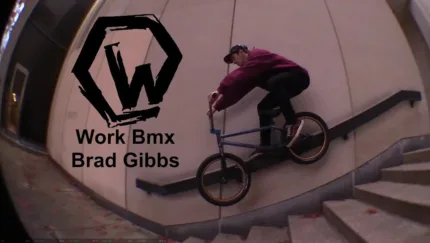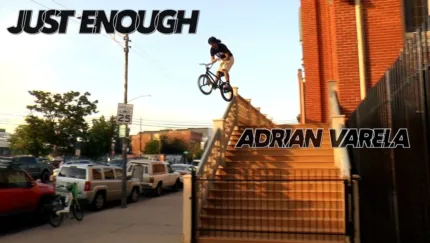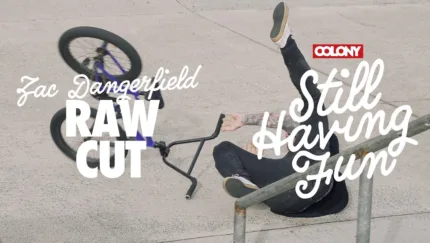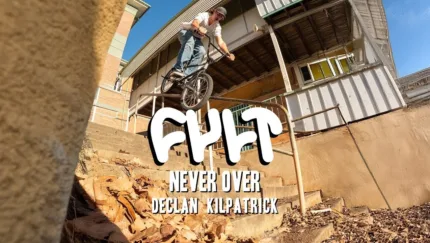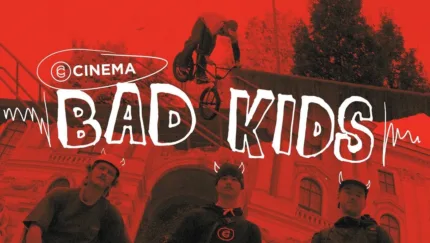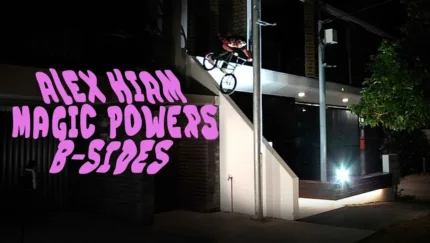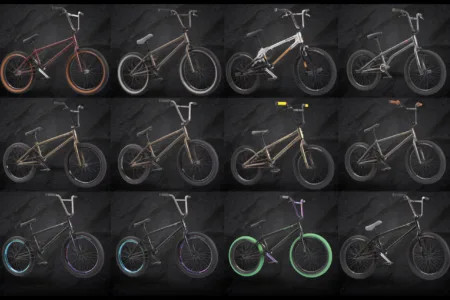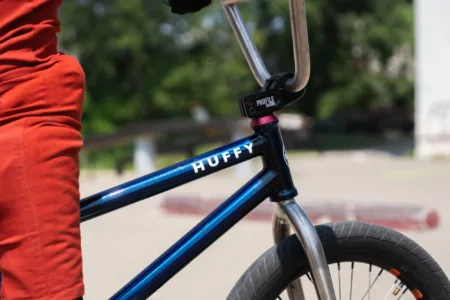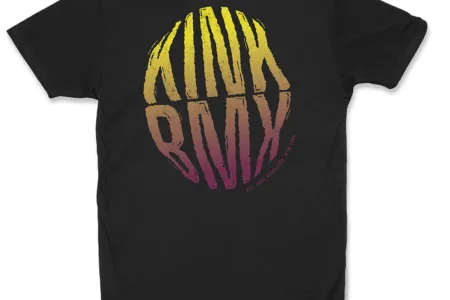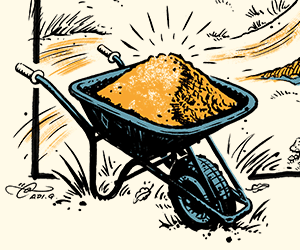
SKYWAY is Closing...
Brian Tunney comes to terms with the end of another era
14 Jun 2017

Dave Vanderspek Circa 1983. Photo courtesy of Maurice Meyer
By Brian Tunney
Skyway’s factory in Redding, California is closing. The brand isn’t actually shutting down, but it has been sold to another composite wheel manufacturer in Indiana, and the longtime operation in Nor Cal, at the same address since the 1980s, is closing by the end of the week. I read the news on Saturday and felt a nervous tinge in my chest; the shock of internalizing bad news, and I started the process of memorializing the brand as I knew it. I quickly forced myself to stop, took a literal step back and gave myself some distance.
What was I doing? Skyway hasn’t been relevant in BMX for over 30 years. It didn’t take long to realize that the nervous pit in my chest wasn’t me feeling the death of Skyway; it was me coming to grips with losing another piece of nostalgia from my childhood. Time was moving on, as was a piece of my childhood that had been in place since before I even knew what a mag wheel was. I was aware that I hated the wheels, that they didn’t work well for current (or even past) BMX needs, and that the brand hadn’t produced any modern equipment for a very long time now.


Skyway mag wheels were, quite literally, a part of the past, even though they continued to exist and probably made the bulk of their money from hot dog carts and wheelchairs.
But once upon a time. Skyway produced one of the first BMX freestyle super teams to exist in the world. From 1986 to 1988, Skyway sponsored the likes of Maurice Meyer, Eddie Roman, Hugo Gonzalez, Craig Campbell, Mat Hoffman and Kevin Jones to ride their bikes and wheels and promote the brand.
— Maurice “Drob” Meyer was an early adoptee of modern day street riding. Meyer excelled at both ramps and flatland, but realized early on that his natural environment of San Francisco was the perfect playground for adopting his ramp and flat moves to the streets. When most people were still concentrating on AFA titles, Meyer was perfecting moves like the fast plant to abubaca in the streets.
— And right behind Meyer was Eddie Roman. Roman was a decent ramp and street rider, but became one of the first riders to step outside the boundaries of competition to pursue street riding. And then he changed the history of BMX freestyle when he picked up a video camera and began filming and editing BMX videos. Without Eddie Roman on the West Coast, there is no telling what would have become in the world of BMX-rider produced videos.
— Hugo Gonzalez did what were perhaps the first wallrides on a BMX bike, except they were done on fences out of transitions on concrete skateparks.
Mat Hoffman
Craig Campbell
"I'm coming to grips with losing another piece of nostalgia from my childhood"
— Craig Campbell, one of the world’s best vert riders, realized that the pegs on his bike were more than just platforms. He was the first documented rider to stall on his pegs, which eventually led to grinds, which begat the entire modern world of BMX street riding. He was also the first rider to 540 wallride, and he did all of that on a Skyway Street Beat frame with Tuff Wheels. There were a lot of techniques that Campbell brought to the foreground in BMX. He’s recognized now as a principal innovator at a crucial time, but I still kinda miss him popping up more often than he does.
— Mat Hoffman and Kevin Jones, both gave their lives as creative visionaries to BMX freestyle and are universally recognized for their contributions. Also, both got their sponsored starts on the Skyway team, and Mat deserves an extra nod for being one of the first riders to recognize that freestyle-specific bikes weren’t always the best equipment for the job. He rode a Skyway race bike (TA frame) for a long time before the Street Beat. And Kevin Jones, well, go try a death truck on Tuff Wheels with a shitty 1.75” GT tire and see how far you get.

Eddie Roman
At the end of 1988, Skyway saw the bubble about to burst and pulled the plug on their hugely influential freestyle program. The influencers went their separate ways, the bikes ceased to exist and Skyway didn’t really survive as a core BMX brand through the turn of the 1990s. Riders still rode Tuff Wheels as options, but the strength and quality of 48-spoke wheels could not be surpassed by the flexibility of Skyway Tuff Wheels.
It was that blip in time being lost that irked me when I read the news that Skyway was being sold. The brand was moving one more step away from their BMX past, and more distance was being placed between this brand’s hugely influential time in BMX and life as I now know it in 2017. I was getting older, and Skyway’s place in the past was moving further and further away from me.
It made me realize that, in order for legends to stay alive, you need to keep talking about them. - BT
"in order for legends to stay alive, you need to keep talking about them."
Get them while you can: http://skywaywheels.com/index.htm

THE TUFF IS DEAD Photo by Sandy Carson / DIG 45 - 2005
Previous
Black and Blue Mondays - The Air BnB Thing
"You threw the likes of a frat party at the house"
Related Content












